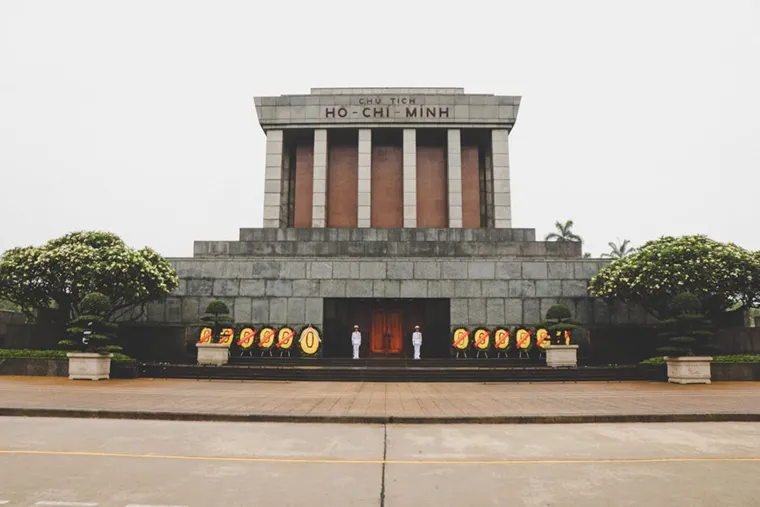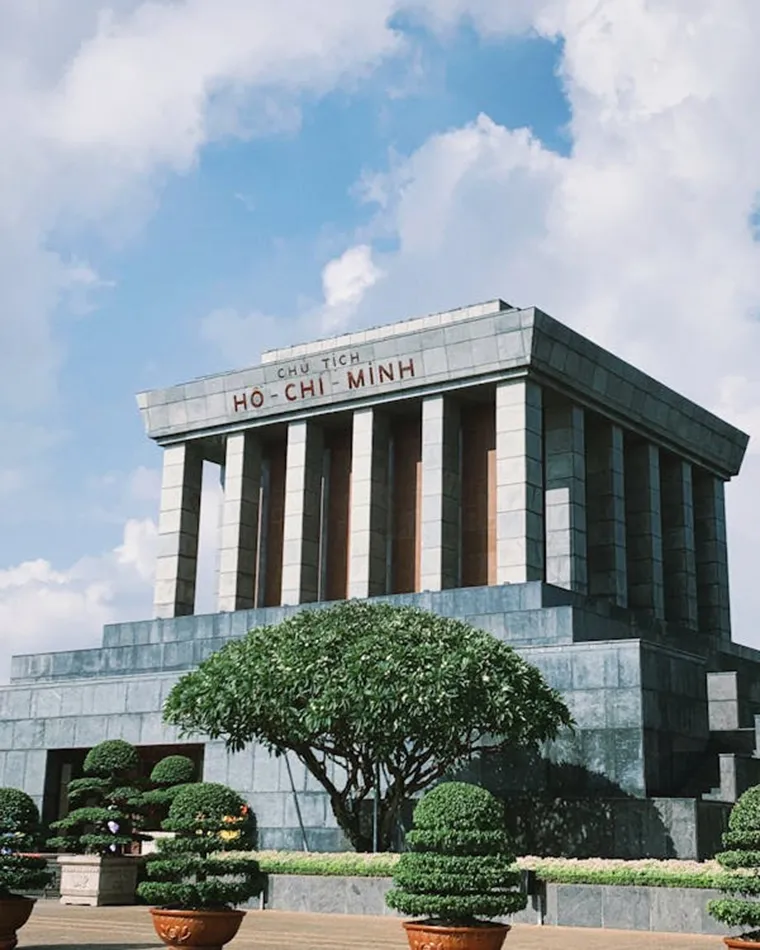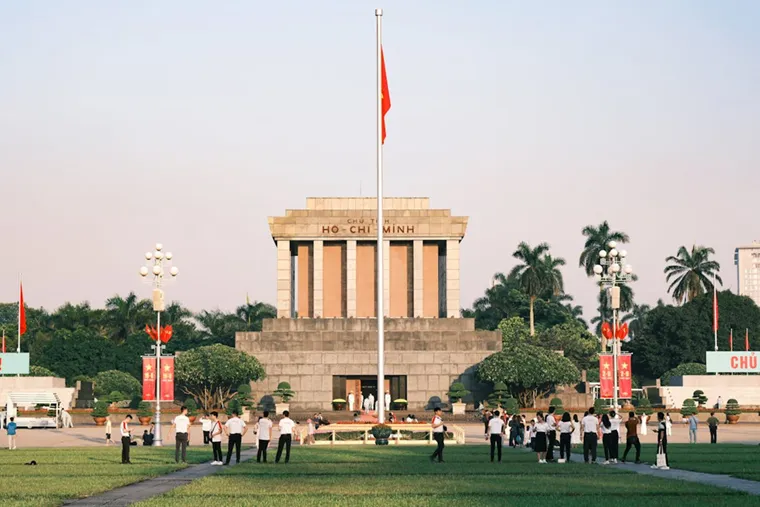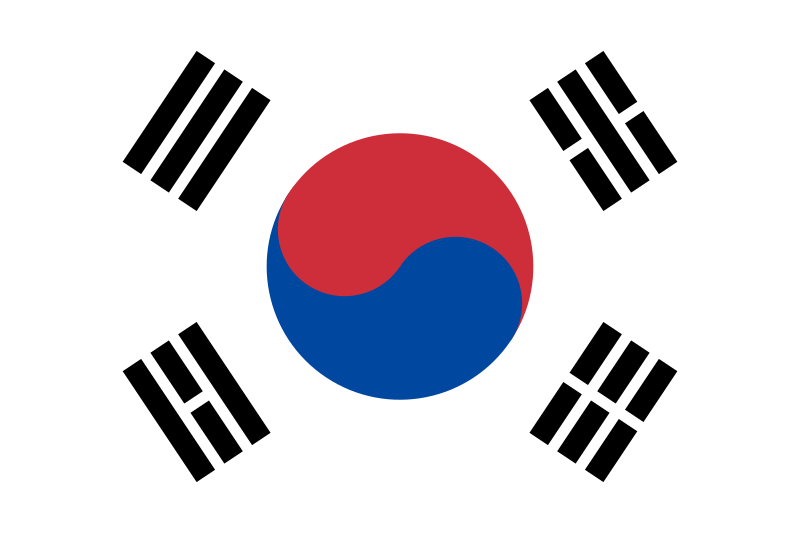Ho Chi Minh Mausoleum: A Must-Visit Landmark in Hanoi
The Ho Chi Minh Mausoleum is one of the most historically and culturally significant landmarks in Vietnam. Situated in Ba Dinh Square, Hanoi, this grand structure serves as the final resting place of Ho Chi Minh, the revolutionary leader who played a key role in Vietnam’s fight for independence. The mausoleum is not just a tourist attraction; it is a sacred site where Vietnamese people pay their respects to the "Father of the Nation."
For visitors, the Ho Chi Minh Mausoleum offers an opportunity to learn about the life and legacy of Ho Chi Minh, experience Vietnam’s historical significance, and witness the strong national pride of its people. This guide will provide insights into the history, architecture, visitor experience, and nearby attractions that make the mausoleum a must-visit destination in Hanoi.
1. History and Significance of the Ho Chi Minh Mausoleum
1.1. Who Was Ho Chi Minh?
Ho Chi Minh (1890–1969) was the founding father of modern Vietnam. As a revolutionary leader, he led the struggle for Vietnamese independence from French colonial rule and later guided the country through the Vietnam War. In 1945, he declared Vietnam’s independence from France at Ba Dinh Square, the very location where his mausoleum stands today.
Despite his immense influence, Ho Chi Minh was known for his humble and simple lifestyle. Before his death in 1969, he requested to be cremated and have his ashes scattered across Vietnam. However, the government chose to embalm his body and preserve it in a grand mausoleum, following the traditions of other socialist leaders such as Lenin (Russia), Mao Zedong (China), and Kim Il-sung (North Korea).
1.2. Construction of the Mausoleum
The construction of the Ho Chi Minh Mausoleum began in 1973 and was completed in 1975, with the assistance of Soviet architects. Inspired by Lenin’s Mausoleum in Moscow, the structure incorporates elements of Vietnamese culture and architecture to create a unique and solemn memorial. The use of grey granite and simple, yet powerful, design reflects Ho Chi Minh’s modest lifestyle and the enduring strength of the Vietnamese people.
Since its opening, the mausoleum has become a symbol of national pride and unity, attracting millions of visitors, including world leaders, diplomats, and tourists from around the world.

The Ho Chi Minh Mausoleum, also known as the Ho President Mausoleum, is where the embalmed body of President Ho Chi Minh is preserved. - Photo source: Pexels
Alongside this important memorial, Hanoi offers other significant historical sites, such as the hoa lo prison museum, which provides a poignant look at a different period in Vietnam's history.
2. Architectural Features of the Ho Chi Minh Mausoleum
The Ho Chi Minh Mausoleum is an imposing three-story structure, standing at 21.6 meters high and 41.2 meters wide. The architecture reflects both Vietnamese and Soviet influences, creating a solemn yet powerful presence in the heart of Hanoi.
2.1. Exterior Design
The mausoleum is built with polished grey granite, giving it a majestic and timeless appearance. At the entrance, the words "Chủ tịch Hồ Chí Minh" (President Ho Chi Minh) are engraved in bold red letters. The structure is surrounded by a beautifully landscaped garden with over 250 species of plants and trees from across Vietnam, symbolizing the country's unity.
2.2. Interior Design
Inside the mausoleum, Ho Chi Minh’s embalmed body is displayed in a glass case, carefully maintained at a cool temperature to ensure preservation. The dim lighting and silent atmosphere create a solemn and respectful ambiance. Guards stand vigil around the leader’s body, enforcing the strict rules and etiquette required for visitors.
Similarly, the Imperial Citadel of Thang Long showcases significant architectural styles reflecting Vietnam's imperial history.

The architecture of the Ho Chi Minh Mausoleum is a solid square structure, 21.6 meters high and 41.2 meters wide. - Photo source: Pexels
3. What to Expect When Visiting the Ho Chi Minh Mausoleum
Visiting the Ho Chi Minh Mausoleum is a unique and solemn experience, but it comes with strict rules and procedures.
3.1. Opening Hours
The mausoleum is open every morning except Mondays and Fridays. Opening hours are typically from 7:30 AM to 10:30 AM, but they may vary depending on the season. It is advisable to arrive early as long queues can form, especially during peak tourist seasons.
3.2. Dress Code and Etiquette
Since the mausoleum is a sacred site, visitors must dress modestly (no shorts, sleeveless tops, or revealing clothing). Silence is expected inside the mausoleum. Talking, laughing, and making noise are strictly prohibited. Photography and video recording are not allowed inside the mausoleum.
Visitors must walk in two lines, following the instructions of the guards.
3.3. Security and Restrictions
Visitors are required to go through strict security checks before entering the mausoleum. Bags, cameras, and large items are not allowed inside and must be deposited at a designated storage area. Food, drinks, and smoking are strictly prohibited.
3.4. Entry Fees
Entry to the Ho Chi Minh Mausoleum is free, making it an accessible attraction for both locals and tourists. However, visitors may need to pay for guided tours or entrance fees to nearby attractions.

The unique and solemn experience of visiting the Ho Chi Minh Mausoleum requires adherence to strict rules and procedures. - Photo source: Pexels
4. Nearby Attractions in the Ho Chi Minh Complex
A visit to the Ho Chi Minh Mausoleum is often combined with a tour of nearby historical and cultural sites:
1 - Ho Chi Minh Museum
Located near the mausoleum, this museum provides a comprehensive look at Ho Chi Minh’s life, revolutionary activities, and Vietnam’s history. The museum’s exhibits include photographs, artifacts, and personal belongings of Ho Chi Minh.
2 - One Pillar Pagoda
One of the most iconic Buddhist temples in Vietnam, built in the shape of a lotus flower. Originally constructed in 1049, the pagoda symbolizes purity and enlightenment.
3 - Presidential Palace
A grand French colonial building where Ho Chi Minh once worked but refused to live in, as he preferred a simple wooden house. The House on Stilts, where Ho Chi Minh spent his later years, is located nearby.
4 - Ba Dinh Square
The historic square where Ho Chi Minh declared Vietnam’s independence from France on September 2, 1945. Today, it serves as an important venue for national events and celebrations.
After paying respects at the mausoleum and exploring these nearby sites, visitors interested in Vietnam's educational and Confucian heritage may also want to visit the temple of literature hanoi.
The Ho Chi Minh Mausoleum is more than just a tourist attraction; it is a place of deep national pride and historical significance. Whether you are interested in history, culture, or architecture, visiting this landmark offers a profound insight into Vietnam’s past and the legacy of its most revered leader. If you are in Hanoi, this site should definitely be on your itinerary.
|
Joytime - Your Vietnam Journey's Servant Expert Follow us for travel tips, local insights, and exclusive offers:
|

Danish Nguyen
Danish Nguyen is a renowned travel blogger in Vietnam with over 5 years of experience sharing unique travel experiences. With a passion for exploring new places, Danish captures incredible moments and provides readers with valuable tips to discover the beauty of his homeland.








.webp)
.webp)








